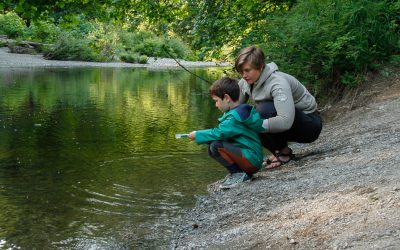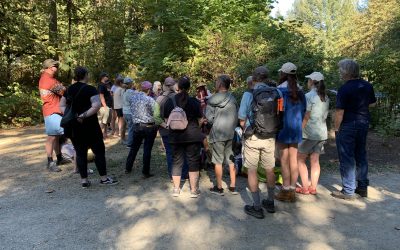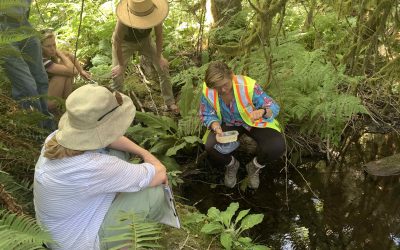WHAT WE DO
we do research that connects
Mukw’ stem ‘i ‘utunu tumuhw, ‘o’ huliitun tst, mukw’ stem ‘i ‘utunu tumuhw ‘o’ slhiilhukw ‘ul.
(Everything on this Earth is what sustains us; everything on this Earth is connected together)
Our work acknowledges and endeavors to elevate Indigenous relationships with the Xwulqw’selu Sta’lo. We offer gratitude and respect to these Peoples who have stewarded lands and waters since time immemorial.
We also aim to build upon a flurry of hydrologic, ecologic and community focused studies and ongoing work in the Xwulqw’selu Sta’lo which can be found here.
Community water monitoring
We visit around 30 sites at seven tributaries in the Koksilah watershed including: Glenora Creek, Heatherbank Brook, Howie Creek, Kelvin Creek, Neel Creek, Norrie Creek, and Patrolas Creek. We keep track of what we notice about the water, and share our observations with the rights holders to the land, Cowichan Tribes.
We recognize the existing and unextinguished Indigenous rights and title to the watershed, so the data we gather belong to the rightsholders.
We use scientific methods (and handy tools that are easy to use) to monitor changes week by week, and year over year.
Hydrologic modeling
We look for patterns in the data to explore how the low flows in the watershed have changed.
We explore what the most important drivers of streamflow change were in the past including climate change, changes in water use and land use changes.
We share the results with rightsholders and project partners to grow our shared understanding of past changes in the watershed and to help chart a different path for the future.
Facilitating community science
We share what we learn with scientific communities, leaders, and people with responsibilities to govern and manage water, lands, and forests in Xwulqw’selu, in the Cowichan Valley, and in British Columbia. They use the research to make smart decisions and adapt plans over time.
We publish the research and stories of how we are working together. People in other watersheds – and those who develop policies and laws – can learn from our experience about the power, value and importance of community-engaged science to keep watersheds healthy.
Stories and posts about what we do
Join a Stream Team and make connections you will never forget
Residents in the Xwulqw’selu watershed are...
Making Connections on World Rivers Day
Connections are at the heart of what we do. In...
2021 field season starting…
August 1st-7, 2021 First week of community...


